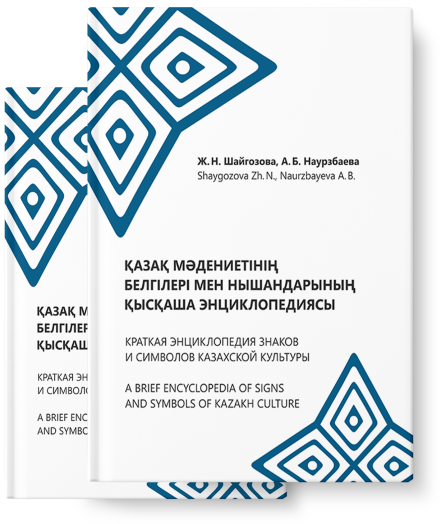
A short encyclopedia of
Signs and symbols of
Kazakh culture

In traditional culture, a sound expressed in a certain way is understood as a kind of connection between the visible and invisible world (material and immaterial). That is, a sound is always a “message”, for example, among the Slavs: the crowing of the cuckoo is a message from the “other” world, the long howl of a dog is a warning of disaster, etc.; among the Turkic peoples, the loud sound of an instrument is a signal, a cry, a call (to action, to gathering), etc.
The sounds belonging to the ritual always have a certain magical purpose. For example, in Kazakh baqsy practise, various sounds (besides playing the kobyz) were used – ringing of suspended metal pendants on the asatayaq (clapper), which creates a whole sound field (a single complex sound). It is used for purification, summoning and sending back spirit helpers, healing, etc. The meaning of the sounds of the tambourine, other instruments or the voice (imitation of animals and birds) is similar. That is, the sound in shamanic practise is a form of communication with the spirit world.
In the rite of the Kazakhs, for example, the eve before Nauryz, young people tied to the tail of an animal (donkey, calf) empty bucket, which made noise and confusion. These noises were apparently intended to drive away the evil winter and signal that its return is unwanted.
According to S.A. Elemanova [6], in the imagination of the ancient Turks, the “right” sound (voice, song) is able to penetrate all worlds and “inform” the addressee – the inhabitants of the subtle worlds.
An example of this is the Turkic throat singing, which is expressed in the simultaneous production of two or three tones. Experts associate this phenomenon with the Turkic belief in a three-tiered structure of the world. The tradition of throat singing used to exist among Kazakhs as well, but it is still most clearly expressed in kobyz playing. The strings of the kobyz produce loud tones that express the sound ideal of the Turks – a three-tiered world model (drone polyphony). The kobyz was considered an exclusively shamanic instrument, and its playing fulfilled a therapeutic, protective, procreative, etc. function.
The similar understanding of the symbolic character of sound was reflected in all genres of Kazakh music, from ritual to everyday songs, as well as in musical and poetic traditions

